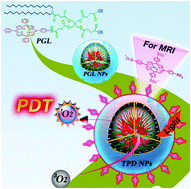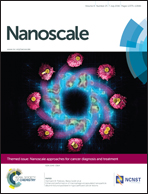Porphyrin-loaded nanoparticles for cancer theranostics
Abstract
Porphyrins have been used as pioneering theranostic agents not only for the photodynamic therapy, sonodynamic therapy and radiotherapy of cancer, but also for diagnostic fluorescence imaging, magnetic resonance imaging and photoacoustic imaging. A variety of porphyrins have been developed but very few of them have actually been employed in clinical trials due to their poor selectivity to tumorous tissue and high accumulation rates in the skin. In addition, most porphyrin molecules are hydrophobic and form aggregates in aqueous media. Nevertheless, the use of nanoparticles as porphyrin carriers shows great promise to overcome these shortcomings. Encapsulating or attaching porphyrins to nanoparticles makes them more suitable for tissue delivery because we can create materials with a conveniently specific tissue lifetime, specific targeting, immune tolerance, and hydrophilicity as well as other characteristics through rational design. In addition, various functional components (e.g. for targeting, imaging or therapeutic functions) can be easily introduced into a single nanoparticle platform for cancer theranostics. This review presents the current state of knowledge on porphyrin-loaded nanoparticles for the interwined imaging and therapy of cancer. The future trends and limitations of prophyrin-loaded nanoparticles are also outlined.

- This article is part of the themed collection: Nanoscale approaches for cancer diagnosis and treatment

 Please wait while we load your content...
Please wait while we load your content...